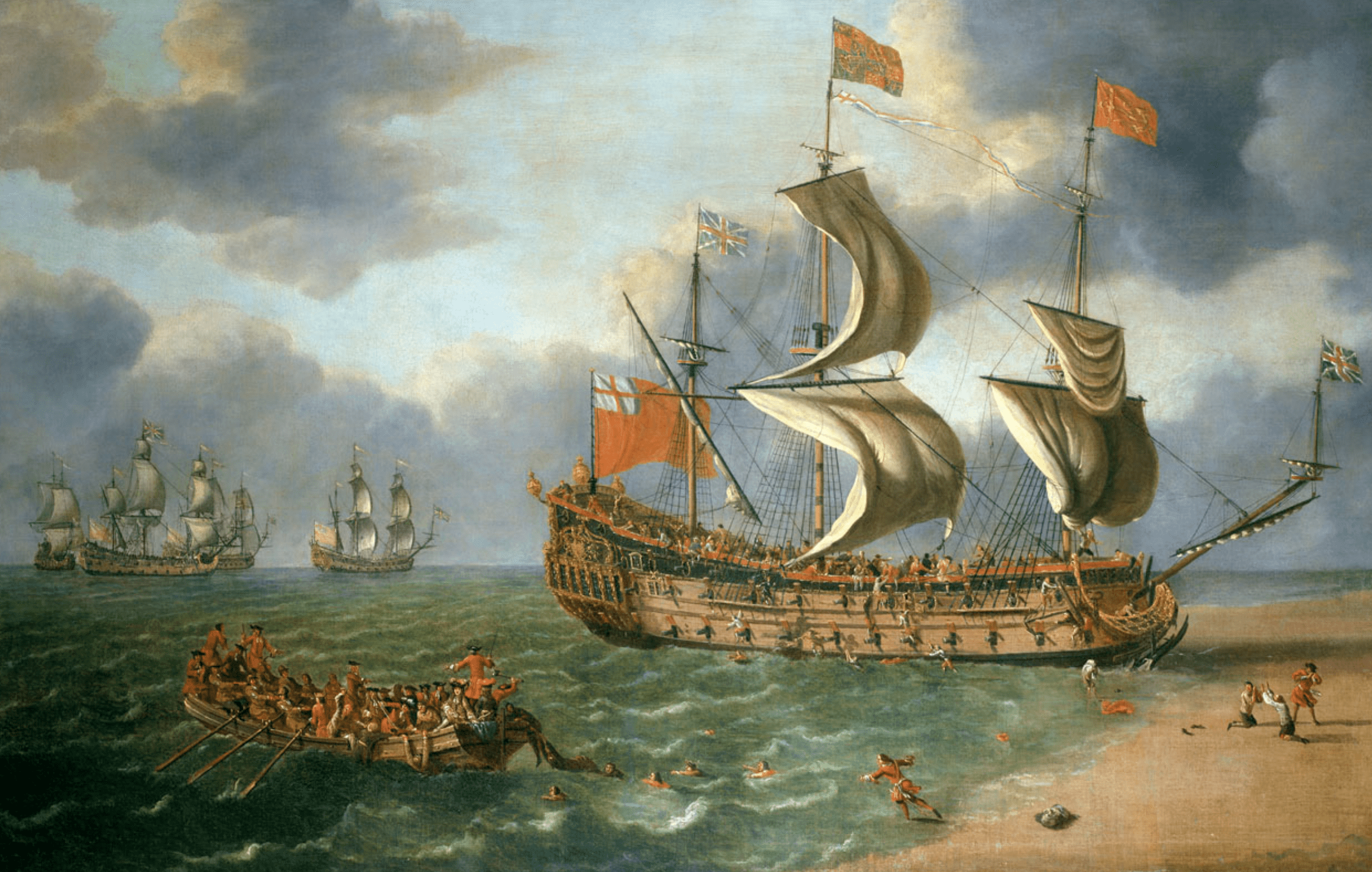A former royal vessel, the HMS Gloucester, that ran aground and sank in 1682 off the coast of Norfolk, was discovered by a group of divers in 2007. Now, after 15 years of research to confirm the ship’s identity and ensure the protection of the ‘at risk’ site of the wreckage, the discovery has been made official. University of East Anglia maritime history expert Claire Jowitt called it, in reference to King Henry VIII’s warship, “the most important maritime discovery since the Mary Rose.”
The HMS (His Royal Majesty) Gloucester was traveling from southern England to Scotland during what became her last voyage. The ship carried none less than the Duke of York James Stuart, the future King James II of England and Ireland, who barely survived the sinking. In a well-documented argument with the pilot of the ship over navigating the treacherous waters, James Stuart delayed abandoning the ship until the last minute, which resulted in tremendous loss of life, as other crew members were not allowed to abandon ship before royalty. Up to 250 crew members and passengers are estimated to have lost their lives that fateful day.
The wreck was discovered after a four-year search stretching 5,000 nautical miles by two brothers, Julian and Lincoln Barnwell, their late father, and two friends. Lincoln Barnwell described the moment of discovery as “awe-inspiring and really beautiful” as he spotted a “large cannon laying on white sand.” Over the course of 15 years, many items, such as shoes, clothes, wine bottles, and the ship’s bell had already been salvaged from the wreck—all of which contributed to the evidence needed to confirm the ship’s identity. One of the wine bottles bears a seal with ‘stars and stripes’ of Colonel George Legge, son of Elizabeth Washington and forefather of the first U.S. president, George Washington.
For maritime historian Jowitt, the find is “an outstanding example of underwater cultural heritage of national and international importance.” The discovery has the potential to “fundamentally change understanding of 17th-century social, maritime and political history:”
A tragedy of considerable proportions in terms of loss of life, both privileged and ordinary, the full story of the Gloucester’s last voyage and the impact of its aftermath needs re-telling, including its cultural and political importance, and legacy. We will also try to establish who else died and tell their stories, as the identities of a fraction of the victims are currently known.
While there are still many more objects being salvaged from the wreck, there are currently no plans to raise the wreck, which is in large parts buried in sand. An accompanying historical research project by Jowitt will, however, explore not only the failures of command at sea before the sinking, but will also look into conspiracy theories surrounding the causes and political consequences of the tragedy.
The general public may look forward to a planned exhibition in the spring of 2023, the result of a partnership between the Barnwell brothers, Norfolk Museums Service, and the University of East Anglia. Finds from the wreck will be on display from February to July at Norwich Castle Museum & Art Gallery, where the organizers will also share the latest on their ongoing historical, scientific, and archaeological research.





